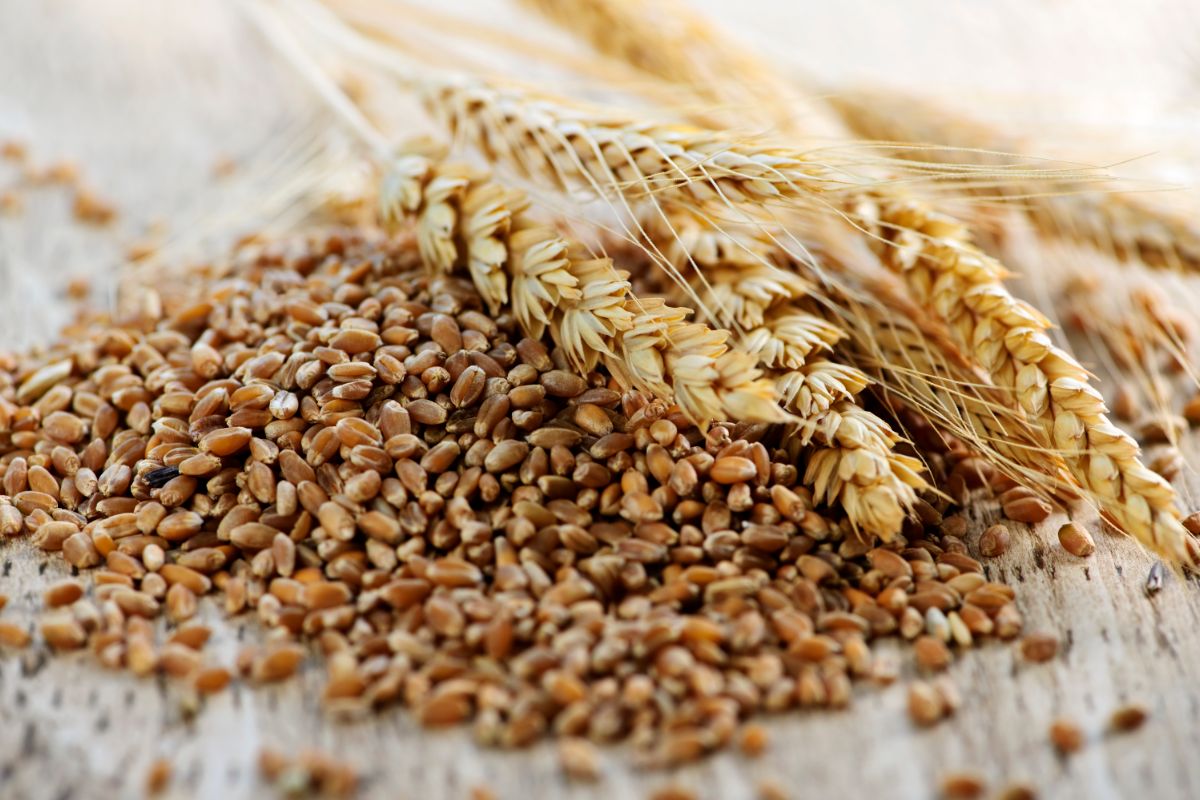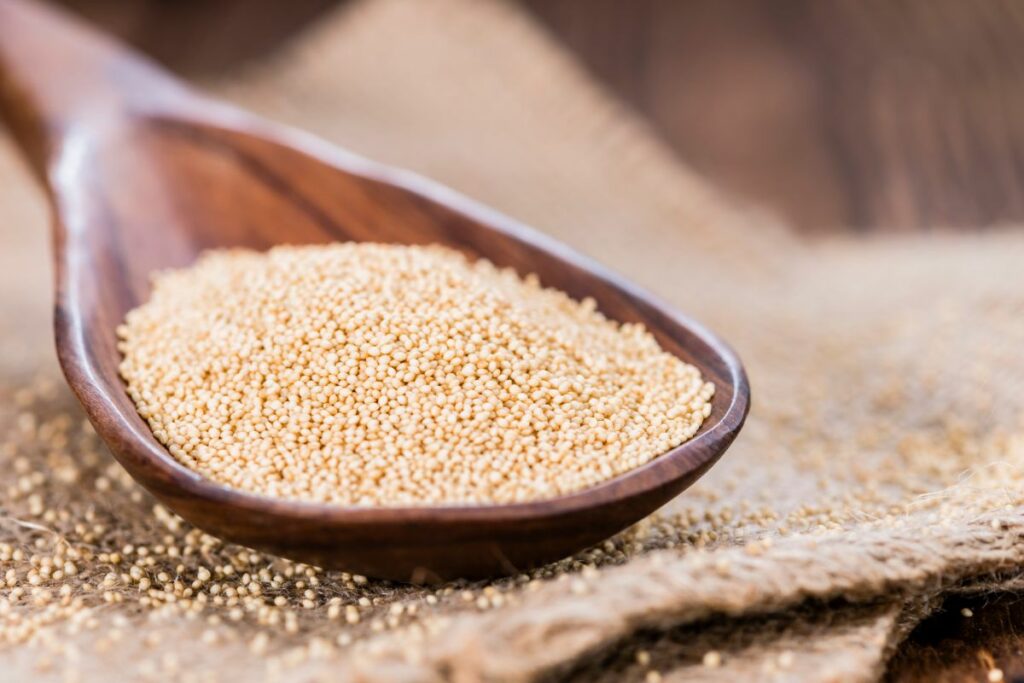If you’re diabetic, you’re probably well aware that you should reduce your intake of carbs and foods with a low glycemic index, and amaranth can be a great addition to your diet. It is a nutritious gain that is very beneficial for diabetics.
It is packed with fiber, protein, and other essential micronutrients. Other grains to consider adding to your diet include brown rice, kamut, millets, and quinoa.
Eating the right quantity of these grains can help you manage your diabetes and help you better control your blood sugar levels.
Below, we’ll take a closer look at the benefits of amaranth for diabetics, as well as the benefits of some other grains.
Can People With Diabetes Eat Grains?
Diabetes is a condition that affects the pancreas and hinders it from producing adequate amounts of insulin, which is a hormone that turns sugar into energy.
If you are diagnosed with diabetes you are advised to keep careful track of your carbohydrate intake to avoid overwhelming your pancreas. However, decreasing carbs doesn’t mean you need to cut them out of your diet completely.
Some grains can even be beneficial for those with diabetes, but – like with most food – you need to enjoy them in moderation.
Grains are an essential nutritional source that play a huge role in a healthy diet, and therefore have a positive impact on your health overall. Still, it’s important to know which grains you should eat and which grains you should avoid.
Whether you have type 1 or type 2 diabetes, refined grains – such as white rice and food made with white flour such as white bread and white pasta – can be hard to regulate once eaten and can lead to spikes in blood sugar.
Therefore, nutritionists recommend that diabetics opt for more complex carbohydrates, as they respond better to synthetic insulin that many people with diabetes use to manage their condition.
Benefits Of Amaranth For Diabetics
Amaranth is a grain that contains no gluten and is a great source of protein. A single cup of amaranth contains approximately 116 mg of calcium.
Amaranth is also a great source of amino acids and is one of the grains that has the highest amount of lysine. Amaranth also contains fiber, iron, potassium, and other important antioxidants.
Fiber is an essential nutrient for managing diabetes, as it helps you maintain levels of blood sugar. In fact, amaranth gives you 2 grams of fiber in each 100 grams serving. Plus, amaranth is a great grain to include in your diet if you want to lose weight.
It is a rich source of fiber and protein, so eating foods that contain amaranth can help with muscle growth and also make you feel fuller for longer, suppressing your appetite and helping you reduce your calorie intake.
Amaranth also has a high glycemic index of around 107, and an insulin curve that suggests it has an insulinogenic effect. Therefore, amaranth should be eaten alongside low GI foods such as wheat, as amaranth can bring the GI down to 25.
Additional Ways To Get Some Amaranth In Your Diet
You can combine amaranth granola with a papaya and peach salad, and garnish with your choice of cherry tomatoes, salad dressing, or sunflower seeds.
You can also make amaranth cookies out of amaranth flour, baking powder, butter, cinnamon, ginger, grated carrots, ginger, maple syrup and walnuts.
Other Great Grains For Diabetics
Ancient Grains
This is a subcategory of grains that have seen increased popularity over the years as more people discover their benefits. Not only are they tasty, but healthy too!
Ancient grains can be added to your diet if you have diabetes, or if you just need to monitor your insulin levels. They’re high in fiber which helps slow down glucose entering your bloodstream.
Ancient grains that are great for a diabetic diet include:
- Farro
- Millet
- Quinoa
- Spelt
Whole Grains

We’re willing to bet you’ve seen ‘whole grain’ on a wide variety of food labels lately. Whole grains are grains that haven’t been stripped down or altered, unlike refined grains.
Whole grains are similar in calorie content to refined grains, but have more essential minerals and vitamins, fiber, and protein.
Our bodies usually digest whole grains more slowly, which leads to fewer spikes in blood sugar and helps you maintain your energy. Common examples of whole grains are:
- Brown rice.
- Oats.
- Whole-grain flour (and breads that are made with this flour)
- Wild rice.
Best Alternatives To Grains For Diabetics
Whole grains can definitely be a healthy aspect of any diabetes-friendly diet, but some might want to lower their grain consumption.
If you want to lower your grain consumption, there are a few alternatives to grains that you can incorporate into your diet instead.
Buckwheat
Buckwheat is often confused for whole grains, but it is, in fact, a fruit seed.
Buckwheat is often recommended to diabetes patients by nutritionists because it has D-chiro-inositol (DC), a chemical compound that increases the sugar-lowering effects of insulin.
Beans And Lentils
Beans and lentils are packed with protein and are hearty and filling. They’re a great choice for a filling meal and for keeping your blood sugar levels in check. Pulses are the group name given to beans, chickpeas, dry peas, and lentils.
They provide some of the same benefits as whole grains. They are packed with B vitamins, fiber, iron, and protein. They also contain carbohydrates that you can digest slowly, giving you longer-lasting energy and help you maintain a healthy weight.
Sweet Potatoes
These are a great alternative to grains as they have a lower glycemic index than white potatoes, so are a great carbohydrate source for people with diabetes.
How To Make Your Diet More Diabetic-Friendly?
Focus On Plant-Based Proteins
For a great place to start making your diet more diabetic-friendly, switch out beans for animal meat in at least two of your weekly meals. You can swap red meat with beans, lentils or tofu.
Once you’ve got used to this concept, you can partake in meatless Mondays to make sure that you’re enjoying at least three totally plant-based meals every week.
Have Meat As A Side Dish
Keep the focus on plant-based protein by rethinking what you consider to be breakfast, lunch, or dinner. You can enjoy animal proteins as a side dish rather than a main dish, and make vegetables and fruit the star of every dish.
These foods are packed with nutrients, such as antioxidants, fiber, and phytonutrients while being low in calories.
Making your plate as colorful as possible with fruit and vegetables ensures you’re boosting your antioxidant intake.
Get Your Timings Right
Every meal and snack you eat should include a mixture of carbohydrates, fats, fiber, and protein. You should eat breakfast soon after you wake up, and then 3-4 hours later you should eat lunch.
Three hours after lunch, have an afternoon snack, then eat your dinner at least two hours before you go to bed.
Final Thoughts
If you’re diabetic you should steer clear of deep-fried food, junk food, packaged food, and processed foods as they contain a lot of refined carbs that can send your blood sugar levels to spike.
However, whole grains or ancient grains like amaranth can be enjoyed as part of a healthy, diabetic diet.








